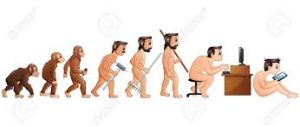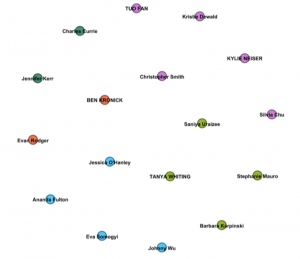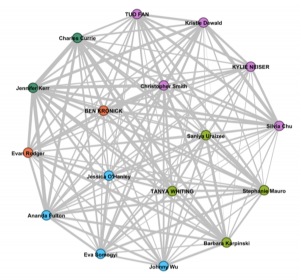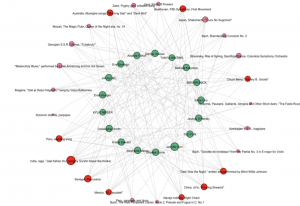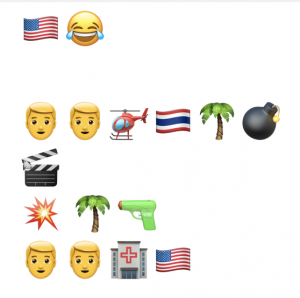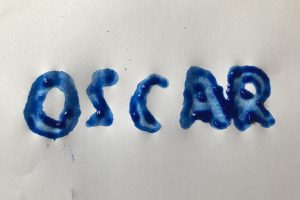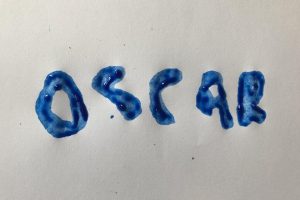Ben’s Task 1: What’s in Your Bag?
Ben’s items in his bag, though wildly different from my own, speak to me because they closely resemble the values I hold as well. His bag held items such as a rain jacket for hiking, a Hydro Flask for staying hydrated, the book The Power of Now to focus on mindfulness throughout the day. It’s fascinating to observe the ways in which one person’s items and activities compare to my own. One point Ben makes in his assignment is that “the narrative within the bag closely resembles the narrative [he] outwardly project[s].” The items in his bag appear to have almost daily value, whereas I consider them to be of use as a treat, when I have the time, however I should probably re-evaluate my priorities and consider such activities as hiking and mindfulness routines as vital and not “treats.”
In regards to the tool used, I was surprised to have a Google Document open, as I found the platform to be rarely used among my peers in this course. In my own experience, Google Docs have been used in collaboration with others for projects, or to save documents in the cloud for the sake of accessibility. Using it as a presentation format is new to me, but makes a lot of sense.
Tanya’s creative way to redo her Task 1 using Audio in this Mode Bending task is incredibly creative! I am most impressed by her ability to have chosen such a unique perspective here. Tanya chose to be the bag in this task, and sit down in an interview where she (the bag) described what was happening in the “What’s in Your Bag?” task. Her ability to personify the bag is unique and had me more engaged than I imagine others were when listening to my own recording… I chose to highlight Tanya’s task here because I myself struggle with completing assignments and tasks in “creative” ways, and often opt for the simplest format.
Basia’s Audio Decathalon is chosen because her experience contrasts my own reasons for choosing the songs I did in the Golden Record Curation. Basia states that she removed all lyricless, classical, and whale songs from her curation because it is best to share intentional messages than might be understood by other beings, than ones we cannot understand but other beings may, such as the whale’s language (I hope I have understood you correctly, Basia). I suppose I disagree with Basia’s view of the fundamental purpose of the Golden Record. Where Basia views it as a time capsule transmitting vital information of human-kind, I considered it to be encompassing of more so than just humans, and also of presenting the sounds we are capable of making, whether using our voices, or man-made tools.
We view text technologies to be those that relay language and message, but who are we to say that other intelligent beings view our language with such distinction as we view lyricless music? It may make no difference to them.
Jess’ Predictive Poetry post stood out to me because I love her perspective of the task as poetic. Jess made it evident that though it was difficult to come up with statements that made sense a lot of the time, she was less concerned about getting a clear point across the way I was, and more intentional about relaying something wacky, somewhat philosophical, and generally thought provoking for the reader. Though we both agree on the underwhelming and limited word choice offered by the predictive text function on our phones, our intentions were staggeringly different as I tried very hard to relay an intentional point in my message (and failed nevertheless). Her view of this task was more artistic than mine, and I commend her for being able to think that way, as I often find my mind to be very literal. It was a refreshing and comical read.
Evan’s use of Piktochart to present her two future scenarios was a refreshing change from the other types of formats used in this course by myself and many of my peers. Her visual approach was easy to follow, yet I appreciated the rationale and clarification below. When examining the first part of Evan’s infographic, it is clear that the challenges presented are already very relevant today; they will simply become more extreme. The second part of her infographic highlights two different types of lives – one that is appealing, and one that will certainly bare the hypothetical effects of the disastrous downturns our planet is facing. Her use of broad global issues rather than specific technology-based ones that may or may not affect only a subset of people is also a nice variation.
I also liked Evan’s mention of the “inherent optimism” that designers often hold, as described by Dunne and Raby (2013), and that design is such an integral part of problem-solving; I found myself really stopping and appreciating this part of the reading as well.
I chose to highlight Nicky’s general Blog here, instead of any particular assignment. Her use of graphics combined with the ease of navigation makes her blog space one of my favourites. Though her site offers similar features to mine (had I chose to utilize more graphics and a navigation menu), it is very pleasing to the eye and portrays a great sense of individuality because of her “character” in each task’s icon. Each one of Nicky’s subpages also has a creative banner with her character on it. I suppose I was just pleasantly surprised by the vibrance and thought put into the design of her space, and have to commend you for it, Nicky! Evan also needs to get a shout out here for utilizing a similar character and navigation system that I enjoyed.
